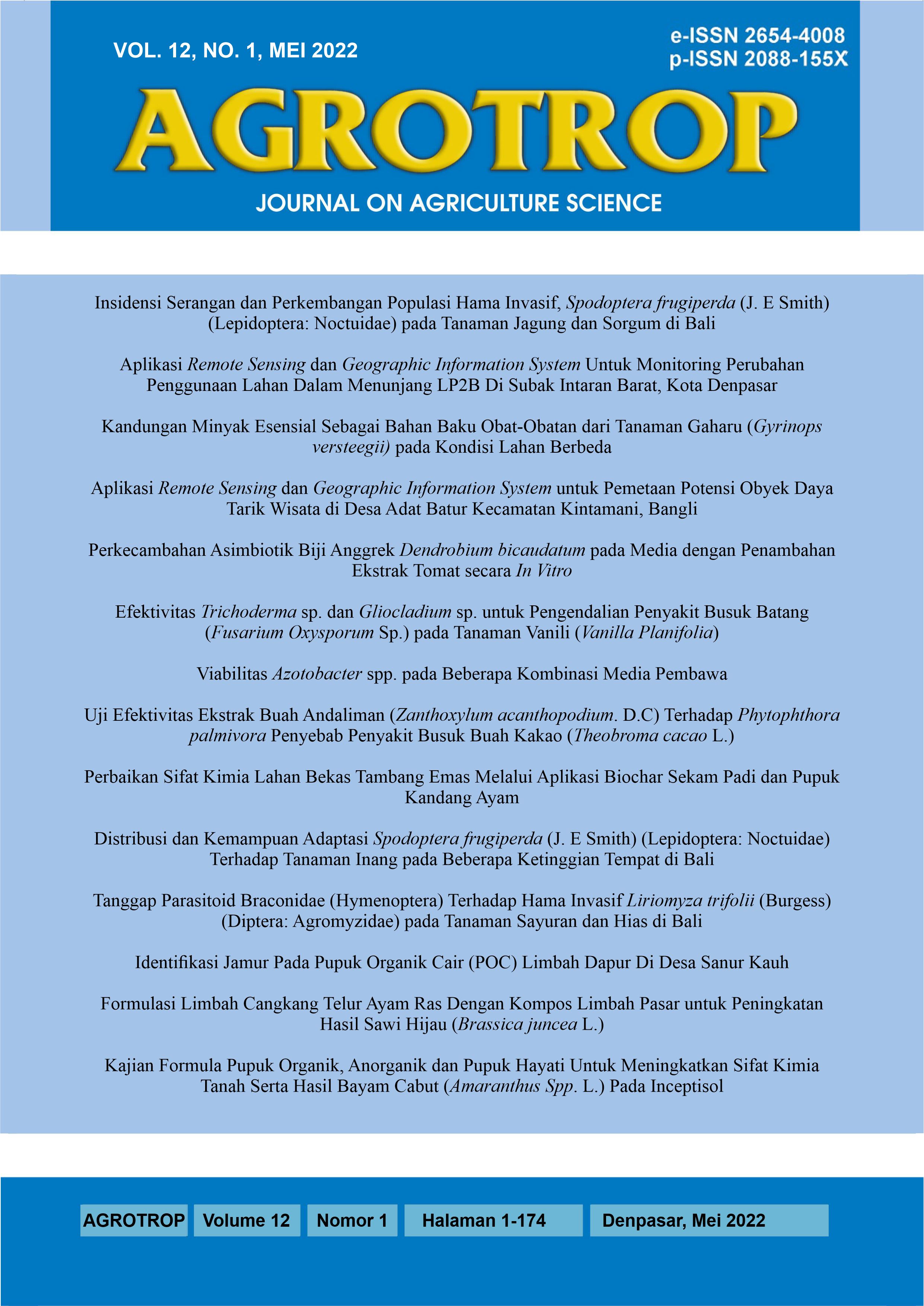Viabilitas Azotobacter spp. pada Beberapa Kombinasi Media Pembawa
Abstract
Azotobacter spp. Viabilities on Some Combinations of Carrier Media. The purpose of this research was to find suitable carrier media for the survival of Azotobacter spp. as a biological fertilizer, before being applied to the field. The method used in this research is explorative, by inoculating Azotobacter spp. Isolate on 4 types of carrier media, namely soil; cocopeat; wood dust and charcoal with a combination of the following: K1 (Land); K2 (soil + cocopeat); K3 (Soil + sawdust) and K4 (Soil + husk charcoal), which were repeated 3 times, so there were 12 experimental units. Analysis of N, P, K, C-organic and pH for soil media, while for cocopeat, wood powder and husk charcoal, an analysis of N and P, C-organic tissue and pH was carried out. The parameters observed were optical density at 2, 4, 6 and 8 weeks. The results showed that the survival of Azotobacter spp. in K4 carrier media (a combination of soil and husk charcoal) is more secure than other types of carrier media with optical density that has not decreased. Analysis of N and P for rice husk charcoal tissue gave the highest results, namely 1,680% and 1,351%, which were one of the supporters of this inoculant viability. Azotobacter spp. viability still guaranteed until 6 weeks incubation period, in several media, (soil + cocopeat), (soil + sawdust), and (soil + husk charcoal). The combination of media (soil + husk charcoal) gave the highest population increase at the 6 weeks incubation period.
Downloads
References
Azzamy. (2015). Manfaat Arang Sekam Sebagai Media Tanam. Artikel.https://mitalom.com/manfaat-arang-sekam-sebagai-media-tanam/ Tanggal akses 8 Pebruari 2018.
Dewi, I.R. (2007). N Biologis Pada Ekosistem Tropis. Makalah. Jurusan Budidaya, Fakultas Pertanian, Universitas Padjadjaran Bandung.
Ferreira, E.M., and I.V. Castro, Residues of the Cork Industry as Carrier for the Production of Legume Inoculants, Silva Lusitana 13(2): 159-167 (2005).
Gunawan, R., I. Anas., dan F. Hazra. (2010). Produksi Masal Azotobacter, Azospirillum, dan Bakteri Pelarut Fosfat dengan menggunakan media alternative. J. Tanah Lingk., 12 (2) Oktober 2010: 33-39.
Hipoci. (2016). Kandungan unsur hara abu serbuk gergaji. http://hipoci.blogspot.co.id/2016/05/serbuk-gergaji.html diposting Rabu 11 Mei 2016. Tanggal akses 10 Pebruari 2018.
Hindersah R, Simarmata T. (2004). Potensi rizobakteri azotobacter dalam meningkatkan kesehatan tanah. Jurnal Natur Indonesia 5(2):127-133
Kusnul K, dan E. Zulaika. (2014). Azotobacter Sebagai Bioacumulator Merkuri. Jurnal Sains dan Seni vol. 3 no. 2. Institut Teknologi Sepuluh Nopember
Rohmah, N., W. Muslihatin, dan T. Nurhidayati. (2016). Pengaruh Kombinasi Media Pembawa Pupuk Hayati Bakteri Penambat Nitrogen Terhadap pH dan Unsur Hara Nitrogen dalam Tanah. Jurnal Sains dan Seni ITS Vol.4, No.1(2016).
Pelezar, M.J. & E.C.S Chan. (1986). Penerjemah Ratna Siri Hadioetomo dkk. Dasar-Dasar Mikrobiologi I. Universitas Indonesia Press. Jakarta.











